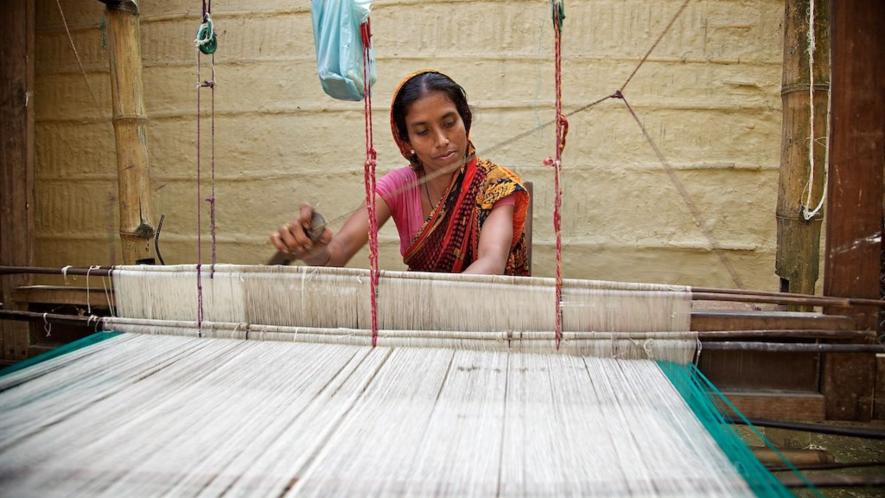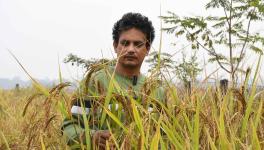Bengal: Handloom Weavers of Nadia, Hooghly on Verge of Extinction

Image Courtesy: Flickr
Kolkata: The first leg of the Autumn Festival Season in West Bengal is underway, starting with Durga Puja and Bijoya Dashami. According to industry estimates, this festival, one of the world's biggest street celebrations, reportedly contributes 10% to the state's gross domestic product, at Rs 13.16 lakh crore.
However, a country-wide economic slowdown has cast a shadow over this annual festive event.
As per industry body Assocham's 2023 report, West Bengal's festival economy was projected to surpass Rs 1.5 lakh crore. This year, the state has is struggling to reach the Rs 1 lakh crore mark during the season, per initial estimates.
The weavers of Dhania Khali, Begumpur, Guptipara, Aatpur in Hooghly district and Shantipur and Fulia in Nadia district are on the verge of extinction due to dwindling product demands and a lack of meaningful government support. As more women in the state opt for western clothing over traditional handwoven sarees, both districts, each with a more than 1,000-year-old weaving tradition, are grappling with reduced product demand, say industry watchers.
In Begumpur, Newsclick spoke with many elderly weavers who are still in the profession but are reluctant to have the next generation follow in their footsteps. They mentioned that weaving a 12-hand saree takes two days, and they earn only about Rs 150 to 200 for their labour. On average, they receive about Rs 80 to 90 a day for their hard work. Begumpur had around 35,000 handlooms in operation in the past, but that number has now dwindled to 500. The labour cost per saree has decreased from Rs 230 before COVID-19 to Rs 180.
Somen Mahata, a leader of the Nadia District Weavers Association, told NewsClick that subsidies were provided to weavers during the Left Front era (before 2011), and a pension scheme was in place. Both the state and Central governments shared these subsidies. However, the Mahatma Gandhi Bunkar Yojna has now been discontinued, increasing the hardships faced by handloom weavers.
As a result, the Autumn Festival this yeart has been barely remunerative for the 1.5 million textile workers in the state, according to 2018 estimates from the Department of Micro, Small, and Medium Enterprises and Textiles, Government of West Bengal. The three largest wholesale markets in the state - Harisha Haat in North Kolkata, Mangla Haat in Howrah, and Metiburuz - have all seen a third of their usual sales, especially following demonetisation.
According to Asadulla Gayen of the West Bengal Tailors Association, the effects of demonetisation, digitisation, and direct sales on online platforms have significantly impacted the traditional supply chain in the state. The Autumn Festival and Pongal are two crucial events contributing to the state's textile revenue.
Even weavers in Shantipur and Fulia of Nadia District, who work on a contract basis for retailers, have seen a decrease in sales. Their profit margins have shrunk instead of the nearly 15% yearly growth witnessed in the past three decades. Thread prices have soared, and both handloom and powerloom workers are operating below their maximum capacity.
The traditional "khat-khat-khat" sound emanating from handloom weavers' huts in Shantipur, located approximately 100 kilometres from the state capital of Kolkata, is fading. Shantipur is renowned for its weaving skills, and its traditional weavers produce Shantipur sarees, highly sought after for their unique weaving patterns and quality.
Nadia dis home to about two lakh weavers, with approximately 40% of them belonging to Scheduled Castes. The traditional weaving community is now on the brink of extinction, as weavers are dismantling their looms en masse and turning to migrant work in Kerala, Tamil Nadu, Mumbai, and Karnataka, according to Soumen Mahato of Nadia District's Tant Shramik Union.
In the past 10 years, wages have seen an increment in nearly every profession except the weaving industry. Daily wage rates have plummeted from Rs 160 to Rs 60-70 in the last decade. A handloom worker who works more than 12 to 14 hours straight can produce only one saree daily, resulting in prevailing wages of Rs 60- 70.
Get the latest reports & analysis with people's perspective on Protests, movements & deep analytical videos, discussions of the current affairs in your Telegram app. Subscribe to NewsClick's Telegram channel & get Real-Time updates on stories, as they get published on our website.























